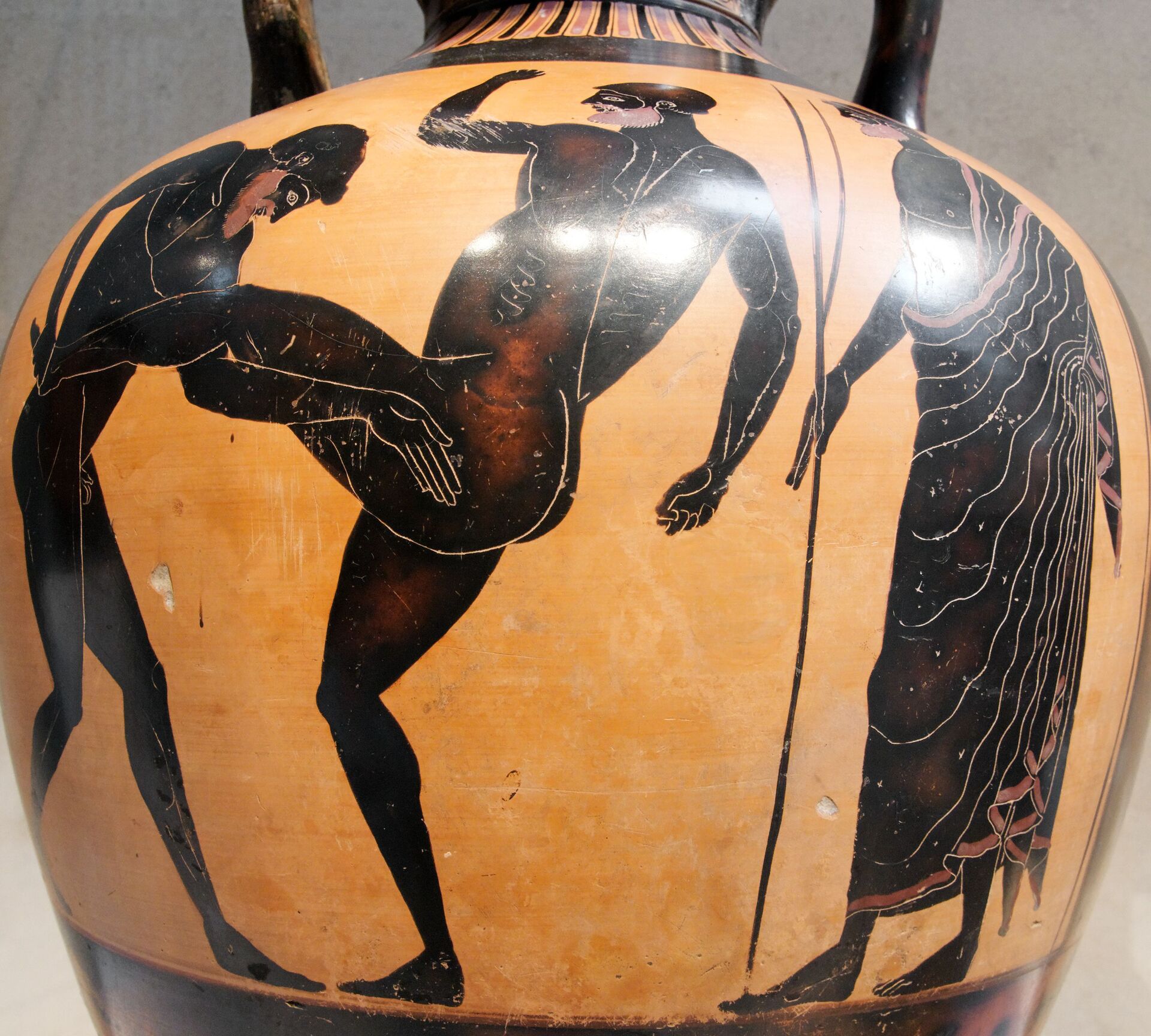Introduced into the Ancient Olympiad in 648 BC, Pankration meaning “all-powers”, is a true submission sport with few rules. But its Australian debut took place in 1994 under the guidance of champion wrestler Kon “Pappy” Papaioannou and 6th degree Hapkido black-belt Anglican priest Father David Smith, Australia’s oldest ever professional boxer.
Kon says that as it stands, there are five clubs training Pankration in Australia, all based in NSW; The Fight Lab, Australia Zeus, A’s Dojo, Lion’s Den and Maitland MMA. And while currently limited to one state, that hasn’t stopped them from having an impact globally.
“Titles are held every two years with 86 member countries competing and we’re are always well represented. Australia’s always placed in the top 10 in every competition. We’ve produced medalists and world champions alike.”
Seeing competitors make use of various blows from striking hands to kicks, holds and chokes it bears a striking resemblance to modern Mixed Martial Arts (MMA). The only limitation is that biting, and eye-gouging were considered illegal techniques.

Historically, the practice was so brutal, that athletes would often die in a bout rather than submit, or face defeat and humiliation. Pankration extended to warfare, with hoplites from many of the Greek city-states using the art in the melee of battle once their weapons wore down.
Mythological heroes Heracles and Theseus it is said, invented the martial art as a combination of their boxing and wrestling prowess.
Even the philosopher Plato was a pankratist, a double winner of the event at that. The biographer Diogenes went so far as to say that he adopted the name Plato, meaning “broad” in Attic Greek, after he was dubbed that by his wrestling coach, Ariston of Argos.
Despite, or maybe due to its historic status as the bloodiest of the ancient combat sports, Pankration was not reinstated in the 1896 revival of the Olympics. It wasn’t until 1969 that Greek American martial artist Jim Arvanitis reimagined a form of the discipline christened neo-pankration.
Its rebirth gained recognition when it was featured in a 1973 issue of Black Belt magazine following an impressive demonstration of the system at their offices. Being one of the oldest and most widely known publications on martial arts in the United States, it was this feature which spread word of the resurgence worldwide.
Today in its modern format, Pankration has developed into a formally recognised and regulated sport with a worldwide governing body like any other martial art. Locally, it’s overseen by the Australian Federation of Pankration outlining rules for grading, training and of course safety.

“Anthony Dimitriou, Kostas Koutroubas, Hellen Daskalakis, Margarita Fasoularis and myself are a few of the Greek Australians to win world titles. This year the competition’s set for November in Tripoli, Greece,” says Kon.
Gone are the days of no-holds barred fights. Strikes to the head are forbidden, as well as the neck, groin and joints. Even coarse language is off the cards. “Failure to abide by the codes can result in a permanent ban… its serious business.”
Shin, mouth and groin guards have also been adopted as required equipment, a far cry from the thin leather wraps sported by ancient practitioners. But even with these modern day considerations it remains a visceral and uncompromising sport.
However, the biggest change between the tournaments of old and new are the conditions for victory. Endless matches ending only in submission have been dropped in favour of two, two-minute rounds in which opponents score points based on the effectiveness of their attacks.
The revival of Pankration brings to light the Ancient Greek’s contribution to the world of martial arts, where the sport can stand as a continuation of the old Olympic spirit in the modern day.








